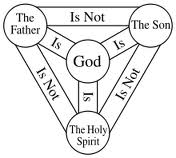Jesus, Rudely Interrupted
| by | Dewayne Bryant, M.A. |
Criticism of the Faith is nothing new. Whether big-budget documentaries, bestselling books, or blockbuster movies, the media is glutted with criticism aiming to overturn the faith of millions. It seems that every year a new angle emerges during the seasons when people step back to reflect upon their faith. As believers consider the truths of Christianity, hostile criticism attempts to revamp, revise, and rewrite what Christians have believed for two millennia. Christmas and Easter are perennial target release dates for books, articles, and television documentaries promising to reveal secrets that will turn Christianity upside down.
One of the most recent contributions of New Testament scholar and textual critic Bart Ehrman is a book entitled, Jesus, Interrupted. Released in 2009, this book picks up where his earlier work, Misquoting Jesus, leaves off. Ehrman continues his assault on the Christian Faith, assuring believers that his criticism does not controvert Christianity, but informs it. Since this information started him on the journey to agnosticism, it is easy to see how his assertions could be construed as disingenuous.
PARDON THE INTERRUPTION
Raised in a “fundamentalist” Christian home, Ehrman graduated high school and attended the conservative Moody Bible Institute. He continued his studies at Wheaton College in Illinois, and later received his Ph.D. from Princeton Theological Seminary under the watch of Bruce Metzger, one of the foremost textual scholars of the 20th century. Somewhere along the way, he became increasingly disenchanted with the Christian Faith. Although he was a denominational minister during his time in graduate school, Ehrman has now left his Christian upbringing far behind. He now considers himself a “happy agnostic” (2005, p. 258). Jesus, Interrupted goes farther than his previous work, claiming not only that the Bible is full of scribal errors, but that the gospel accounts are fraught with contradictions and late inventions. In this sense, according to Ehrman, the story of Jesus—the historical man—was “rudely interrupted” by late insertions into the text. Though it has been well received on the popular level, Ehrman’s work has not met with approval from those best quipped to evaluate his claims. In his blog, respected New Testament scholar Ben Witherington III critiques Ehrman’s book, saying,
It is mystifying however why he would attempt to write a book like Jesus, Interrupted which frankly reflect [sic] no in-depth interaction at all with exegetes, theologians, and even most historians of the NT period of whatever faith or no faith at all. A quick perusal of the footnotes to this book, reveals mostly cross-references to Ehrman’s earlier popular works, with a few exceptions sprinkled in.... What is especially telling and odd about this is Bart does not much reflect a knowledge of the exegetical or historical study of the text in the last thirty years. Even in a work of this sort, we would expect some good up to date bibliography for those disposed to do further study, not merely copious cross-references to one’s other popular level books.... The impression is left, even if untrue, that Ehrman’s actual knowledge of and interaction with NT historians, exegetes, and theologians has been and is superficial and this has led to overly tendentious and superficial analysis (2009, emp. added).
Ehrman spends a great deal of time demonstrating what he considers to be problems with the gospel accounts. The discussion includes the nature of authorship, supposed inconsistencies and contradictions, and the idea that the gospel accounts present different accounts of events in Christ’s life. This includes the assertion that no one knows who wrote the gospel records. It was not Matthew, Mark, Luke, and John as tradition claims, because Jesus’ disciples consisted of “[l]ower-class, illiterate, Aramaic-speaking peasants from Galilee” (2009, p. 106). Someone else far removed from the original historical setting must have written them.
Ehrman overplays the old chestnut that the gospel accounts were written anonymously. They are considered formally anonymous because none ever identifies their author. John’s gospel account gives the “Beloved Disciple” as the one responsible for its writing, and many believe that Mark mentions himself as the young man who runs away while Jesus is arrested (cf. Mark 14:51). Authors in the ancient world often referred to themselves indirectly in their work, and this is as close as any of the gospel accounts come to identifying their authors.
While the evangelists did not sign their work, this is a far cry from not knowing who wrote the gospel accounts. There was virtually no dispute in the early church over who wrote each one. If they had truly been written anonymously, there would be no end to the debate. In one sense we could compare the book of Hebrews to the gospel accounts. Like the gospel records, it, too, is formally anonymous. However, no one really knows who wrote it, and no less than a half dozen possibilities are cited as potential authors. If the gospel accounts were truly in the same category, the debate over their authorship would have continued to the present.
Ehrman notes that, “[s]tories were changed with what would strike us today as reckless abandon.... They were modified, amplified, and embellished. And sometimes they were made up” (2006, p. 259). He never explains why he chooses to believe that the stories concerning Jesus are legendary or fictitious. Biography, legend, and fiction are different genres, each with its own distinguishing characteristics. This is common fare for Christianity’s critics: to announce the Bible as fiction, legend, myth, or fairy tale without justification or supporting evidence.
Ehrman notes:
For nearly twenty-five years now I have taught courses on the New Testament in universities, mainly Rutgers and the University of North Carolina at Chapel Hill. In all this time, the lesson that I have found most difficult to convey to students—the lesson that is the hardest to convince them of—is the historical-critical claim that each author of the Bible needs to be allowed to have his own say, since in many instances what one author has to say on a subject is not what another says. Sometimes the differences are a matter of stress and emphasis; sometimes they are discrepancies in different narratives or between different writers’ thoughts; and sometimes these discrepancies are quite large, affecting not only the small details of the text but the very big issues that these authors were addressing (2009, pp. 98-99).
One of the episodes Ehrman cites as a bona fide “error” in the gospel records is Christ’s cleansing of the Temple. John locates this event in the Passion Week, while the Synoptics present the incident early in Jesus’ ministry. So which is it? Which one made the mistake? Actually, it never would have crossed the minds of the ancient audience. The ancients did not insist on chronological accuracy in the same way moderns do. Ancient authors often arranged their material chronologically, but they also arranged it topically, and, in the case of the gospel accounts, theologically. To force an ancient work written in another culture to conform to modern Western standards is scholastic arrogance at its worst.
Many moderns put the Bible under a literary microscope, analyzing every chapter, every verse, every word. In the eyes of hostile critics, even the tiniest difficulties balloon into monumental testaments to the inaccuracy and unreliability of the Bible. Ben Witherington makes an interesting point in this regard. He says that we can think of the authors of the four gospel accounts much like painters. Each painted a portrait of Jesus based on his own perspective, as well as the purpose and rationale intended by the Holy Spirit. They selected the material to include in their work, a selectivity that is individualistic in nature. That the gospel writers would highlight different events, or give different angles on the same events, is expected. Modern biographers work the same way. Critics expect the authors to record the life of Jesus with a high-resolution, all-seeing lens. Rather than holding the biblical books to the same standards in use during the time they were produced, critics insist on modern standards in a way that is as unreasonable as it is irrational. To force the ancient text to conform to modern standards is bad interpretive method. It is a fundamental building block of reading ancient literature—the Bible included, of course—that one must seek to understand the context in which the literature is written. One cannot read ancient Greco-Roman literature by modern standards any more than one should read a modern newspaper with the same frame of mind as a citizen of ancient Rome. To continue Witherington’s analogy, this would be like criticizing Leonardo Da Vinci for not using a digital camera to photograph the Mona Lisa.
To point out one supposed contradiction highlighted in Jesus, Interrupted, Ehrman argues there is an irreconcilable difference concerning the death of Judas as recorded in Matthew and Acts. Matthew says that Judas hanged himself and the place became known as the Field of Blood because it was purchased with blood money (Matthew 27:3-9). In Acts, Luke claims that the Field of Blood is called that because, as Ehrman puts it, Judas burst open and bled all over the place. The reading in Acts is not as different as Ehrman suggests. Both accounts agree that the property is purchased with Judas’ money. Luke is ambiguous as to why the field was named the Field of Blood, while Matthew is explicit. Ehrman barely gives a passing nod to suggested attempts to reconcile the two, and downplays them accordingly. It is highly likely that Judas hanged himself, and after death, when the immune system is no longer working, bacteria began to multiply and produced gases that bloated Judas’ body. If the rope broke or Judas’ body fell when others were taking him down, Judas’ body would have ruptured upon striking the ground. This is not imaginative speculation, but the practical stuff of elementary biology.
Another problem in Jesus, Interrupted is the absence of comparative data concerning manuscript evidence from other ancient sources. Other Greco-Roman sources ranging from Greek philosophers to Roman government officials demonstrate far less attestation than the New Testament. The average classical author may have a work represented in only a couple of dozen manuscripts. The oldest copy of these works is often many centuries after the original date of writing. For instance, in the cases of Greek philosophers such as Plato and Aristotle, their most famous works are represented by a handful of manuscripts dating to the medieval period. Comparing the New Testament to these writings, the Bible has well over 5,700 copies. Roughly a dozen date to within a century of the original authors, and about four dozen exist that date to within two centuries. The earliest copy of a New Testament text is P52, otherwise known as the John Rylands papyrus. Housed in the British Library, this fragment of John’s Gospel dates to approximately A.D. 115-135. The contrast between the textual evidence of the New Testament and the manuscript evidence from the classical world could not be more vivid. The noted historian F.F. Bruce recounts the words of Sir Frederic Kenyon, former director of the British Museum: “The interval between the dates of the original composition and the earliest extant evidence [is] so small as to be negligible, and the last foundation for any doubt that the scriptures have come down to us substantially as they were written has now been removed” (Bruce, 1972, p. 20).
THE OTHER SINS OF EHRMAN
Ehrman plays his hand with considerable calculation. In his The New Testament: A Historical Introduction to the Early Christian Writings, he asserts, “there is not a single reference to Jesus or his followers in pagan literature of any kind during the first century” (2008, p. 41). While technically correct, it is somewhat misleading. Josephus is Jewish—and therefore not pagan—yet he mentions Christ in two passages in his Jewish Wars at the end of the first century, references which are undisputed among scholars specializing in Josephan studies. If we were to include the first two decades of the second century, we would have to include several pagan authors: the Roman historians Suetonius and Tacitus, along with Pliny the Younger, governor of the Roman province of Bithynia.
The assertion that no references to Jesus and His followers exist in the first century has one important qualification that Ehrman seems to have omitted deliberately. While there are no extant references to them known to scholars today, Suetonius and Tacitus would have needed historical records or official documents in order to produce their biographies of the Roman emperors. While these documents no longer exist today, first-century records seem to have been readily available to historians. In other words, these documents did exist, but have perished with the passing of time. Ehrman’s rather misleading statement should have read, “there are no surviving references to Jesus or his followers in strictly pagan literature during the first century A.D. known to scholars presently.”
New Testament scholar Robert Yarbrough points out in Ehrman’s work the “traditions of (much later) noncanonical gospels are consistently privileged vis-à-vis their canonical counterparts; the assumption is that we must treat their assertions as potential historical fact even though the assertions were not written down for a century, at least, after their putative origin” (2000, p. 366). Ehrman tends to elevate the non-canonical gospel records over those of the New Testament even though they were written centuries after the life of Christ. The constant claim that the gospel accounts cannot be trusted because they were written decades later than the events they describe vanishes, and the non-canonical gospels are considered relatively trustworthy despite the fact that the amount of time that separates them from the events they purport to describe is not decades as with the gospel accounts, but centuries.
As an example of his approach, Ehrman notes that the Gospel of Peter features “[a] giant Jesus and a walking, talking cross,” adding, “It’s hard to believe that this Gospel was ever lost” (2009, p. 209). He seems to think that Christianity was like any other religion, accepting the fantastic with little regard for reality. Many of the extracanonical gospels Ehrman prizes demonstrate the same features. The Infancy Gospel of Thomas has a number of odd miracle stories. The author appears to enjoy telling fantastic stories of weird happenings during the fictional childhood of Jesus, and the more bizarre the better. This provides a vivid contrast with the canonical gospel accounts, which record the happenings of Jesus’ life in sober fashion. It should be no wonder why the Christians dismissed the tall tales of gospels like Peter and Thomas. They preferred believable biographies to other “gospels” that were the ancient equivalent of science fiction.
THE HERMENEUTIC OF SUSPICION
As a text critic, Ehrman is quite good. As an interpreter he is abysmal. He insists on a rigidly literal interpretation of the text that does not allow for nuances or for passages from one book to complement those from another. In some cases, individual authors may state components of a biblical doctrine individually, but Ehrman forces them into different camps. It seems almost as if his method aims to pit the biblical authors against one another rather than allowing them to work together. In this way, Ehrman is able to create contradictions where none actually exist. In some places, he appears to deliberately distort the theological viewpoint of the biblical authors in order to manufacture divergent viewpoints. He typically notes that scholars have attempted to reconcile these positions, unsatisfactorily as far as he is concerned. After explaining what appear to be perfectly legitimate and convincing solutions to each problem he discusses, Ehrman then reverts to an unorthodox reading of the text and pronounces the difficulty unsolvable.
For Ehrman, the ultimate reason why more people do not know about these supposed contradictions is because the population is largely ignorant—the very problem he seeks to remedy. In his view, scholarship has not written popular-level books, and seminary-trained ministers are unwilling to share this information with their church members. When discussing his view that most of the New Testament books were not written by the actual authors, he asks with incredulity, “why isn’t this more widely known? Why is it that the person in the pew—not to mention the person in the street—knows nothing about this? Your guess is as good as mine” (2009, p. 137). It never seems to cross his mind that seminary-trained ministers and biblical scholars who know about these views find that they fail to agree with the evidence.
Yarbrough makes a powerful point about the cavalier attitude Ehrman takes toward the biblical text: “the early Christians who supposedly invented stories about Jesus...and then believed them were not deconstructionists engaged in teaching careers in comfortable university positions but tradesmen and professionals who knew the daily struggle for survival and were willing to die for their convictions” (2000, p. 370). For those living in the first century, the Christian faith was not a detached system of belief that could be adopted or discarded without consequence. Mistrust, discrimination, and even persecution ever loomed above the heads of the early Christians. Making the choice to follow Christ was a genuine commitment that had real—and often highly unpleasant—consequences.
The reader of Jesus, Interrupted must be careful to sort through Ehrman’s arguments. He is an accomplished textual critic, but allows preconceptions and personal bias to color his conclusions. Rarely, if ever, does Ehrman engage the opposing viewpoint. He seems to delight in manufacturing biblical contradictions and then refuses to allow them to be solved. His work makes it seem as if he has uncovered a secret hoard of biblical knowledge previously denied to all others. To those who are academically equipped to evaluate the truthfulness of Ehrman’s claims, this treasure trove of trade secrets is nothing more than fool’s gold.
REFERENCES
Bruce, F.F. (1972), The New Testament Documents: Are They Reliable? (Downers Grove: InterVarsity Press).
Ehrman, Bart (2005), Misquoting Jesus: The Story Behind Who Changed the Bible and Why(San Francisco: HarperSanFransicso).
Ehrman, Bart (2006), Peter, Paul, and Mary Magdalene: The Followers of Jesus in History and Legend (New York: Oxford University Press).
Ehrman, Bart (2008), The New Testament: A Historical Introduction to the Early Christian Writings (New York: Oxford University Press).
Ehrman, Bart (2009), Jesus, Interrupted: Revealing the Hidden Contradictions in the Bible (and Why We Don’t Know About Them) (New York: HarperOne).
Witherington, Ben (2009), “Bart Interrupted—A Detailed Analysis of ‘Jesus Interrupted’ Part 1,” [On-line], URL: http://benwitherington.blogspot.com/2009/04/bart-interrupted-detailed-analysis-of.html.
Yarbrough, Robert (2000), “The Power and Pathos of Professor Ehrman’s New Testament Introduction,” Perspectives in Religions Studies, Winter, 27[4]:363-370.

 tention was that Israel would model Godly characteristics to the rest of humanity and through the Jew all mankind would be drawn to God and desire to enter into relationship with Him. As a result of their stiff necked pride and stubbornness they failed miserably and actually turned people away from God.
tention was that Israel would model Godly characteristics to the rest of humanity and through the Jew all mankind would be drawn to God and desire to enter into relationship with Him. As a result of their stiff necked pride and stubbornness they failed miserably and actually turned people away from God.
 play in the street. Hello!!! There are cars and trucks going up and down the street and I don’t want any flat kids. God has a larger purpose in mind and he didn’t want His people screwed up. They were supposed to be His representatives to the world and lead to the Kingdom of God.
play in the street. Hello!!! There are cars and trucks going up and down the street and I don’t want any flat kids. God has a larger purpose in mind and he didn’t want His people screwed up. They were supposed to be His representatives to the world and lead to the Kingdom of God.

 also believe that Jesus is and has always been the primary communicator and the communication from God. We as humans are not equipped to have interaction with the Father.
also believe that Jesus is and has always been the primary communicator and the communication from God. We as humans are not equipped to have interaction with the Father.


